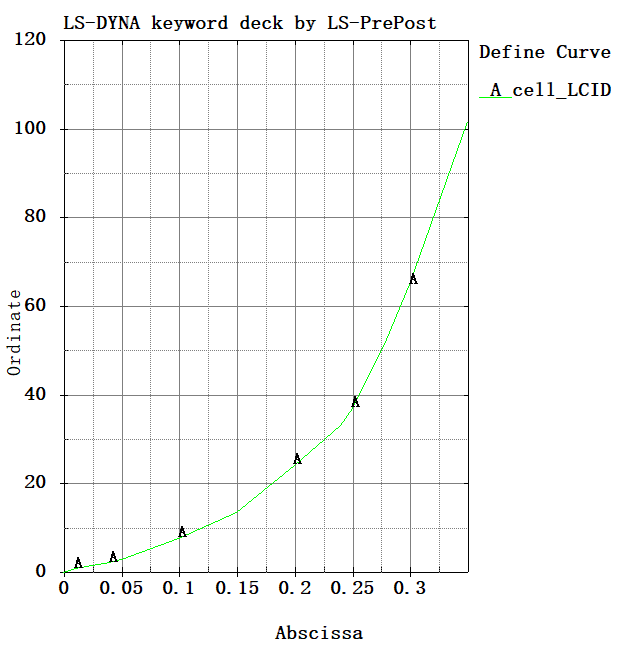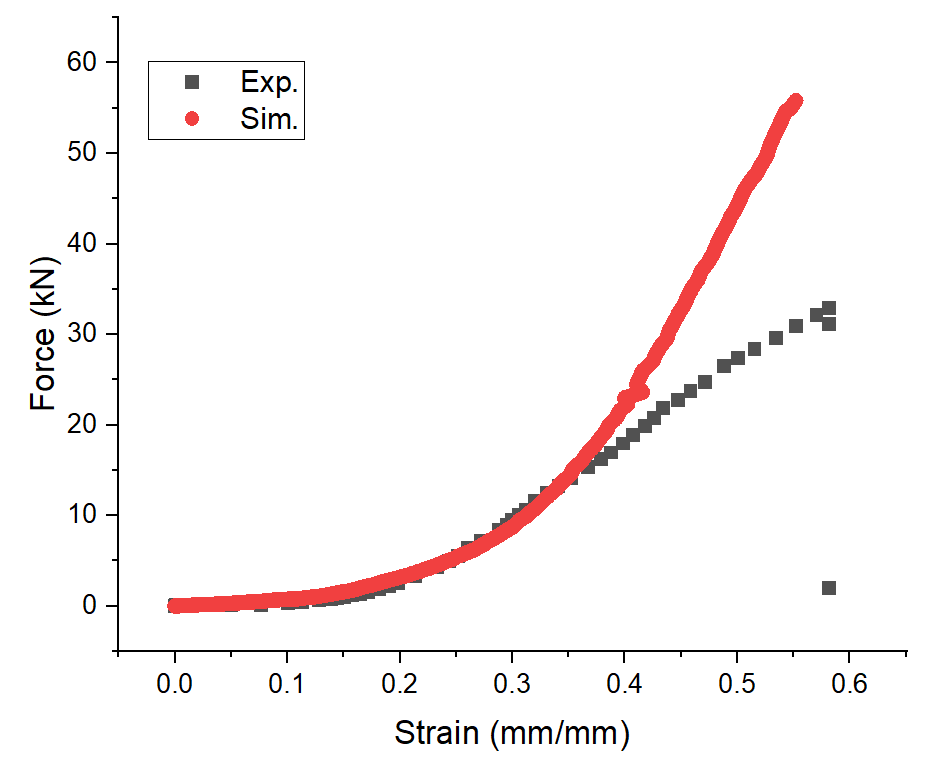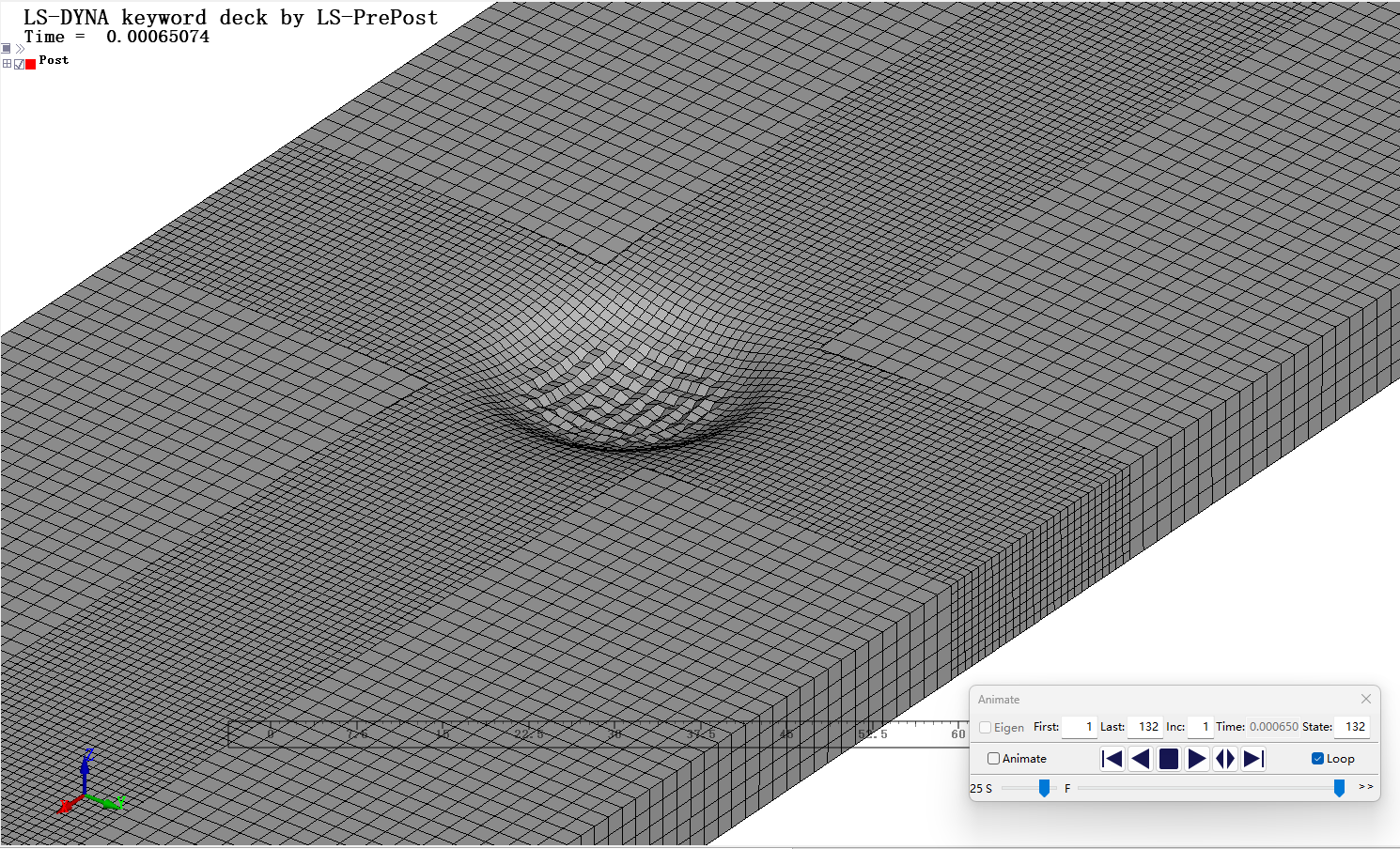TAGGED: cruve-fitting, hourglass, lsdyna, material-data
-
-
July 9, 2025 at 1:48 pm
b23040001
SubscriberDear all, I am currently attempting to reproduce a certain paper.
I conducted a high-speed compression on a crashable foam material ( *MAT_CRASHABLE_FOAM, with a constant rate of 10 m/s, set at a relatively high level to improve computational efficiency). The paper provided the material's Young's modulus, Poisson's ratio, tensile cutoff value, and constitutive equation (the input data as shown in the two previous photos).
However, the force-strain curve I obtained is inconsistent with that in the paper (As shown in the third photo). Could you please help me understand what might be the reason for this discrepancy?
Additionally, I don't understand why the results always exhibit a HOURGLASS phenomenon (As shown in the last photo). I would greatly appreciate any answers. Thank you! -
July 10, 2025 at 12:50 pm
Ram Gopisetti
Ansys EmployeeHi,
Try using Hourglass 5 for the foam part.
Additionally, please post the paper (link) you are trying to reproduce; perhaps we or someone else will be happy to assist you further.
Cheers, Ram
-
July 10, 2025 at 1:24 pm
b23040001
SubscriberHi Ram,
Thank you for your sugguestion! The link of this paper is Observation and modeling of the thermal runaway of high-capacity pouch cells due to an internal short induced by an indenter - ScienceDirect.
Best regards,
Yaxuan Wang
-
- You must be logged in to reply to this topic.



-
3792
-
1388
-
1188
-
1095
-
1015

© 2025 Copyright ANSYS, Inc. All rights reserved.











